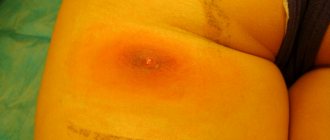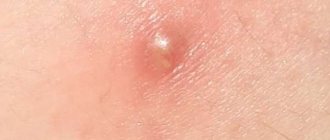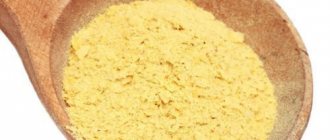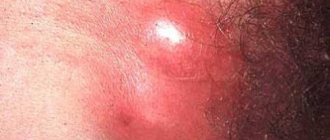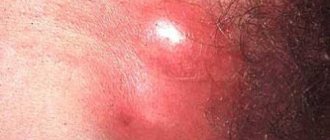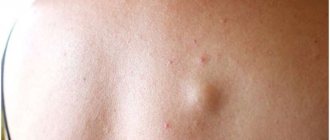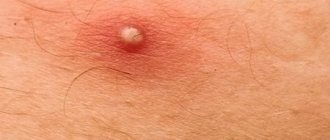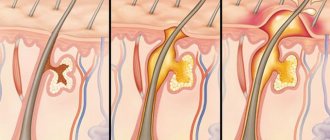A boil, or boil in common parlance, is a rather dangerous thing. Its self-medication, especially if it appears in places such as the temple, head or face, can have the most disastrous consequences. However, there are situations when it is not possible to get medical help, and not treating an abscess is also extremely dangerous. It can break not outward, but inward, thereby causing blood poisoning, therefore, it is worth knowing how to properly squeeze out a boil yourself, so as not to cause irreparable harm to yourself.
A boil, or boil in common parlance, is a rather dangerous thing.
What is a boil?
You can only squeeze a fully mature boil.
Is it possible to squeeze out a boil? Of course, doing this on your own is extremely undesirable, but if a person decides to undertake such manipulations, then he is unlikely to be dissuaded. Therefore, before you begin the process of removing a boil, you should first understand what it is. Boil (boil), that is, a purulent abscess, is the result of an acute inflammatory process of the hair follicle (follicle) and the surrounding skin, which occurs due to the penetration of pyogenic bacteria Staphylococcus aureus into the follicle. First, redness appears on the skin, then a lump forms in its place, which quickly increases in size. At first, this lump does not have an abscess. It appears later in the form of a white-green head, which, when ripe, bursts, releasing purulent contents. It is good if the pus breaks out, but there are exceptions when the breakthrough occurs in the internal tissues. In this case, blood poisoning (sepsis) can occur, which is quite dangerous not only for human health, but also for his life. Having discovered such an abscess in yourself, it is advisable to contact a medical institution as soon as possible, and if this is not possible, then at your own peril and risk you can try to get rid of the scourge on your own, and for this you need to know what the abscess consists of.
Stages of the disease
At the initial stage of boil development, a slight compaction (infiltrate) appears in the deep layers of the dermis. As inflammation increases, the area becomes intensely red and acquires a bluish or black tint. A noticeable tumor-like formation appears above the surface of the skin, filled with purulent contents. The clinical picture becomes more vivid: pain intensifies, temperature may rise. At the third stage, processes of tissue necrosis (death) develop in the area of the hair follicle and sebaceous gland.
At the infiltration stage, conservative methods are used to treat the boil: the sore spot is treated with an antiseptic or a 5% iodine solution. Anti-inflammatory antibiotic therapy may be prescribed. If there is no improvement within two to three days of such treatment, you should go to the doctor. If there is a delay in opening the lesion, pus can go into the inner layers of the skin and cause thrombophlebitis of the veins, abscess, phlegmon and then meningitis or myocarditis, sepsis.
The structure of the boil
A mature boil is an abscess that includes a follicular pustule (hair follicle) and a shaft (a column through which pus passes). If you still decide to squeeze out the boil, then you should know that the pressure process involves removing this rod. If you remove only the pus and leave the column, the abscess will appear again, therefore, you should take this process responsibly so that complications do not occur.
It is also necessary to take into account that only fully ripe boils can be crushed. The fact that the abscess is ready to be squeezed out is indicated by the disappearance of the tumor around it, and an increase in pain when pressed, as well as the dark red, with a purple tint, color of the skin around the boil. The head of a mature abscess will become pronounced and will clearly stand out above the skin.
Under no circumstances should you touch an immature abscess. This is fraught with the spread of the inflammatory process to healthy areas of the skin, that is, furunculosis.
Stages of boil development and symptoms
As the boil matures, it sequentially goes through 3 stages of development. Each of them is characterized by a specific clinical picture.
The first is the infiltration stage . After staphylococcus enters the hair follicle, inflammation gradually develops in a small limited area. The affected area turns red, hardens and swells.
At the second stage - suppuration and necrosis - the focus of inflammation increases to several centimeters in diameter. Pain in the affected tissue appears, increasing with palpation.
, the purulent-necrotic stage develops . A small, raised, cone-shaped pustule forms in the center of the infiltrate. A necrotic core of pus and dead cells forms inside the abscess. The process is often accompanied by intoxication fever, general weakness and severe pain.
After some time, the pustule bursts, pus flows out of it and the necrotic core comes off. Swelling subsides, pain subsides. The patient's condition is improving.
The last stage is healing . After cleansing the wound, a deep cavity remains at the site of the infiltration. Gradually it fills with granulation tissue. The skin is restored. Scars form in place of extensive boils.
How to speed up maturation
I really want to get rid of the boil that has popped up as quickly as possible, because it creates so many unpleasant sensations, but the abscess takes quite a long time to mature - from several days to two weeks. There are several ways to speed up its maturation. This is applying compresses with anti-inflammatory ointments and home remedies to the sore spot:
The abscess takes quite a long time to mature
- balsamic liniment according to Vishnevsky;
- ichthyol ointment;
- aloe leaves and juice;
- a paste of golden mustache or Kalanchoe leaves.
Bandages must be changed every four hours. You need to apply the product until the boil is completely ripe.
Under no circumstances should an abscess be affected by thermal procedures, especially if this is not done at elevated body temperatures.
Extrusion process
Is it possible to squeeze out boils yourself? Before describing in detail how to squeeze out a boil at home, I would like to say that it is very dangerous to squeeze out any abscess on your own, not to mention those on the head, since complications may arise that will be life-threatening if removed will happen wrong. The consequences of incompetently squeezing out a boil, for example, on the temple, are terrible in that they can affect the brain, causing, for example, meningitis. And this is very life-threatening.
It is clear that many ignore all the warnings and decide to get rid of the annoying abscess themselves. How to squeeze out a boil correctly and what to do to avoid troubles will be answered below.
There are tips on the Internet for squeezing a boil with a bottle. Someone may have managed to get rid of an abscess in this way, but this process will not be described here due to its danger. There is no need to risk your health by using such a far from best method of removing an abscess. It can cause unpredictable and very sad consequences.
It is very dangerous to squeeze out any abscess yourself.
So how to squeeze out a boil? Once you are sure that it is ripe, you need to carefully prepare for the squeezing process. For this you will need rubbing alcohol. It is highly undesirable to use other alcohol-containing liquids. The sequence for removing an abscess at home is as follows:
- First, moisten a cotton pad in alcohol and generously wipe your hands and the place where the abscess is located;
- With two fingers, from the very beginning of redness to the head, gently press on the abscess. At the same time, pus will begin to be released, which is wiped off with a clean cotton pad or swab;
- squeeze the pus until pure blood comes out of the abscess. If the removal occurred as needed, the hole will be clean with smooth edges;
- then thoroughly wash the wound with a solution of hydrogen peroxide, apply a gauze bandage with levomekol ointment to it.
You may not get rid of all the pus in one go. If the lump around the squeezed out abscess does not disappear, then not all of the pus has come out. You should not persistently put pressure on the abscess, but it is better to apply compresses from aloe leaves or Vishnevsky ointment to it for several days. They will perfectly draw out the remaining pus and heal the wound, preventing pyogenic bacteria from multiplying in it.
If, after a few days, the pain around the affected area of the skin intensifies and the tumor continues to grow, then you should not tempt fate, but rather go to see a surgeon.
Rehabilitation period
After 1-2 hours the patient is discharged from the clinic. If the drainage is removed, it must be removed by a surgeon after 1-2 days. It is recommended to limit physical activity for 2-3 days after the procedure. For 2 weeks, it is necessary to go for examinations and dressings at the frequency specified by the surgeon, as well as ensure a balanced diet and proper rest. The tissues heal completely within 10-14 days.
To consult, clarify prices and remove a boil in St. Petersburg, call SM-Clinic.
If the deletion was incorrect
You should not remove the abscess yourself.
The boil is incorrect, what will happen? If the abscess is not removed as it should be, then red dots may appear around it, which is evidence that pyogenic microbes have begun to spread over healthy areas of the skin. This can cause furunculosis.
In this case, you should immediately consult a doctor.
There is also no need to cauterize these points with alcohol, so as not to cause an abscess. The extrusion process cannot be carried out at elevated body temperatures.
And in general, if you have doubts about what you are doing, you should not remove the abscess yourself, but it is best to contact a medical facility.
Cost of boil removal service
The total price for surgical removal of a boil in Moscow in our clinic includes several components. In particular, it includes the cost of specialist consultations and the procedure itself.
If you are concerned about an inflammatory formation that looks like a boil, make an appointment with a surgeon. This can be done by phone or through the online form on the website.
Why it is not advisable to squeeze out the boil yourself
When squeezing out a boil, the rod comes out simultaneously with purulent fluid, but this often does not happen when the boil is removed independently. If the rod remains in place, then opening is not only absolutely useless, but can also lead to complications, that is, re-development of the abscess, and this will continue until the purulent column is removed.
If you were unable to completely clean the wound on your own, there is no need to risk doing anything further, but rather run to the doctor. Removing boils at home causes the formation of not just one, or even two of the same, but a great many, which can only be gotten rid of in a medical facility, and this process is very long and painful.
Can you imagine what your skin will turn into after the boils disappear? It certainly cannot be called beautiful.
Also, do not forget that taking antibiotics, without which it is impossible to cure furunculosis, will greatly weaken your body. Do you need this?
How to cure a boil yourself without squeezing
You shouldn’t rush things and risk your health by squeezing out a boil outside a medical facility. You just need to let it fully ripen, and when it breaks through, carefully remove the pus with your hands, rinse the wound with hydrogen peroxide and apply one of these folk remedies:
Honey perfectly draws out pus and has a bactericidal effect
- aloe leaf, which is cut lengthwise, applied to the wound and secured;
- gruel from raw potatoes, which is applied in the same way as aloe;
- honey cake. Honey perfectly draws out pus and has a bactericidal and wound-healing effect.
Health to you and your loved ones!
The correct treatment for most boils is surgery.
Self-medication with ichthyol, Vishnevsky ointment, compresses can provoke uncontrolled spread and generalization of the purulent process, therefore only a doctor determines the treatment tactics for a boil. If the abscess is not properly opened and drained, antibiotics, anti-inflammatory and other drugs cannot effectively act on the tissue affected by pus.
Opening and draining the boil
If the purulent process extends beyond the hair follicle, mandatory surgical intervention is required. It is performed using classical techniques or using a laser. Laser removal of a boil is accompanied by additional disinfection of the affected tissues of the boil. The most optimal intervention technique in each specific clinical case is determined by the doctor.
The surgeon also determines the time for opening in such a way that the rod is fully formed - otherwise a relapse of the disease is possible. The procedure is performed under local anesthesia. After opening, pus and necrosis are removed. Drainage is removed according to indications. The tissues are treated with an antiseptic. An antibiotic ointment and a sterile dressing are applied to the wound.
